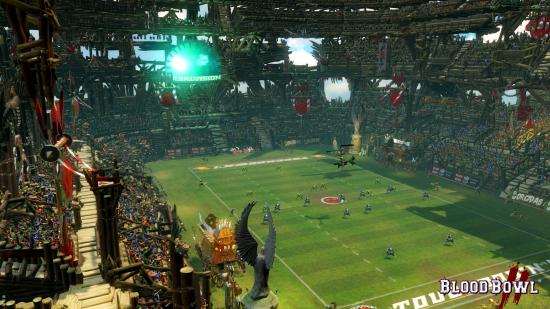In 2004, Parisian upstarts Cyanide made Chaos League – an American football-riffing strategy game set in a medieval realm of dwarves, elves, orcs and undead, partly inspired by Games Workshop’s Blood Bowl.
Nine years later, Cyanide’s Sylvain Séchi is directing Blood Bowl II. To make sense of the moves that’ve taken the studio from one side of the pitch to the other, we’re going to have to go back to the kick-off.
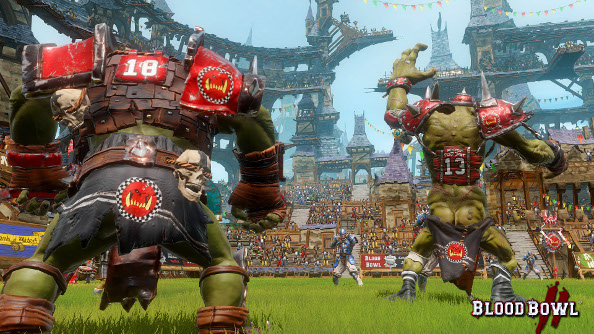
It started with a no. Over a decade ago, Cyanide approached Games Workshop to revive a sporting Warhammer spin-off the tabletop publisher had all but forgotten.
“It’s a difficult license for them because it’s a parody,” said Séchi. “And it’s American football, so it doesn’t do very well in Europe – and let’s not talk about Asia.”
Games Workshop were on the cusp of their AAA phase; the era of Warhammer Online and Dawn of War. Turn-based tactics had retreated to the handhelds, and digital adaptations of ‘80s miniatures weren’t on anybody’s minds. So it was a no.
But Cyanide couldn’t put the idea aside. They’d built their studio by pursuing their hobbies on work time. They were cyclists and rugby players who made cycling and rugby management sims. They were American footballers and tabletop fans, and they were damned if they weren’t going to make this game.
“We didn’t have the IP,” said Séchi. “But we wanted to make fantasy American football. That’s why we started Chaos League.”
A thoughtfully-paced RTS, Chaos League balanced the bloody possibility of stampings and deaths with colourful commentary. Opposing players could be drugged, referees bribed, and rules enthusiastically broken. In short, it was Blood Bowl – down to the appearance of skills like ‘Mighty Blow’ and ‘Bulldoze’, and the classic orcish image of a red sun on the after-match loading screen.
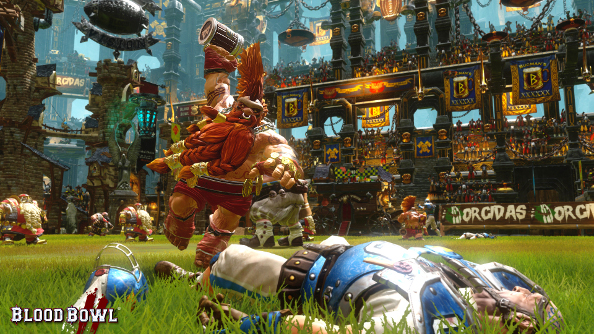
“There is a ball,” said Séchi. “But it’s most important to hit each other in the face.”
Chaos League was successful enough to merit an expansion – and to catch the eye of Games Workshop, who resumed contact with a different tone.
The outcome looked bleak. The case could have gone to trial, cutting Cyanide’s future in fantasy bloodsports expensively short. But instead, the tabletop publishers suggested an unlikely alternative.
“You proved to us you are passionate,” they said, to the best of Séchi’s recollection. “Let’s drop all these things. You want the IP, we’ll give you the IP. You make the game. Let’s make Blood Bowl.”
Cyanide agreed to halt future sales and development of Chaos League. The elation of finally winning Blood Bowl more than compensated.
“It was crazy,” said Séchi. “But we were still Games Workshop fans – so everything just fit in quite smoothly at the end.”
And so a working relationship began on unusually combative terms. Cyanide’s first order of business was to “gain trust” – a tough ask, but they had plenty of opportunity. Since Games Workshop were invested in making sure the peculiarities of Blood Bowl’s setting were carried over, the two sides were in close communication.
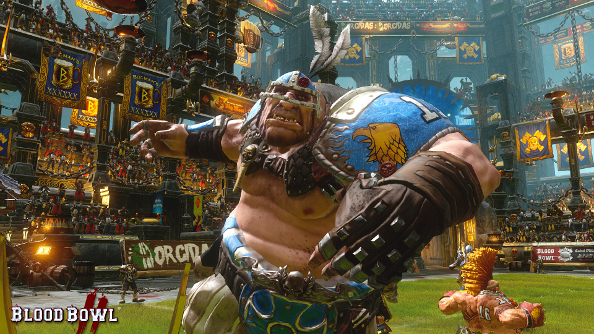
While Cyanide had every intention of faithfully adapting the tabletop sport, they had little choice but to update its looks. Whereas the core Games Workshop games had been regularly revamped since the ‘80s, becoming broadly more intricate and grimdarker, Blood Bowl’s models had been in chunky, cartoon stasis for decades.
Cyanide’s art director liaised with Games Workshop’s, and together they redrew each of the game’s races in line with contemporary Warhammer Fantasy.
“They were very happy that we did this work,” said Séchi. “They also benefit from it, because now the image of the IP is of a more modern game, and not old-school ‘80s.”
Games Workshop were less concerned about the direction Cyanide might take with Blood Bowl’s rules. It was the French studio who decided that the game ought to retain its grids, stats and turn-based structure – alongside a real-time-with-pause component in the vein of Chaos League.
For Séchi, who has presided over the series since its inception, that real-time mode appears to be his one regret.
“In production it happened to be a poor decision,” he said. “Because it actually just made two games, and the two games are so different. You see StarCraft, they don’t have a turn-based game, and in Heroes of Might and Magic they don’t have a real-time mode. There is a reason for that.
“We were a bit immature. Young and crazy.”
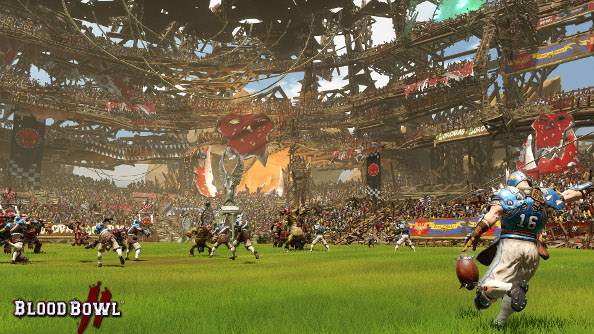
Partly as a result, the development of Blood Bowl’s first digital edition was difficult. And when it shipped, its frustrated team knew it was laced with bugs.
“We were upset,” said Séchi. “Players were upset, everybody was upset.”
Cyanide have corrected many of their mistakes since with more than 30 patches across three versions of Blood Bowl, but the game retains a reputation for technical shakiness in some quarters. It’s because of this, according to Séchi, that Blood Bowl II has retreated from its intended June release date all the way to September.
In many ways, Blood Bowl II is a do-over – a production unencumbered by the trappings of real-time, made by a team with the hindsight to know that players will wholeheartedly embrace the turn-based systems that have been at the heart of the game for 18 years.
This cruel and complicated board game has turned out to possess oddly broad appeal. Cyanide is now 100 people – some Blood Bowl teamsters, some not – but they have all occasionally played the game together. “And screamed,” pointed out Séchi. “I remember the screaming.”
“The special thing about Blood Bowl is making a game that is so hardcore that you will drop your screen out of the window,” he went on. “We’ve seen it at Cyanide – one guy actually dropped his screen across the [office] space once. Yet you will come back to it.
“It can be such a punishing game. But at the same time you have so much reward when you successfully make an action, when you level up a character or win a match. It isn’t found much in today’s games, where reward is so easy and frustration is non-existent.”
Crucially, Blood Bowl’s teeth-grinding bitterness is leavened by comedy – the bloodthirsty commentary of vampire Jim Johnson and ogre Bob Bifford, and the undeniable slapstick of an orc falling flat on his arse one grid out from the endzone. Like the best of Games Workshop, it’s an engine for ludicrous anecdotes.
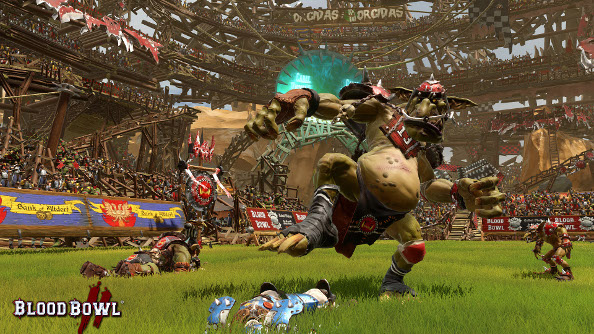
“When a troll throws a goblin, it lightens the fact that you fail,” said Séchi. “Because what are the odds of successfully throwing someone across a field and having him survive? You’re not really expecting it to work.”
And yet there’s great skill involved in minimising that element of randomness: ordering your moves in such a way so as to prevent an accidental turnover too early; exploiting the number of turns in a half to score more often; learning the quirks of each of the game’s 20-odd races.
Blood Bowl has been embraced as a competitive game with depth to rival the great MOBAs – inspiring regular tournaments and a healthy YouTube culture.
“That was very exciting,” said Séchi. “Because a reason Games Workshop was not exploiting Blood Bowl was that it wasn’t getting huge sales as a board game. I think in 10 years’ time, Blood Bowl would have been forgotten history.”
But the digital version has sold over a million copies across its three editions. An out-of-print game, kept just barely alive by hobbyists playing via javascript, has been adopted by a new generation.
Most exciting is the meta. Dedicated board gamers once played tens or 100s of matches with like-minded players; now, they play 1,000s. Blood Bowl’s competitive ceiling has been raised far higher than ever before, and its tactics are evolving.
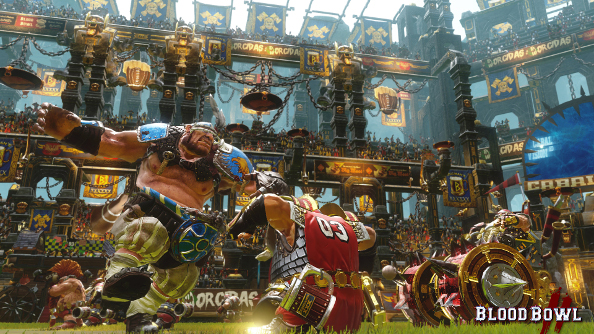
“This game is alive,” said Séchi, proudly. In fact, what Cyanide would like Blood Bowl II to be is a live game – one they can update and refine over years just as Blizzard and Riot Games do StarCraft and League of Legends.
“In board gaming you release a rulebook every five years and there are a couple of changes,” said the designer. “In video games, you see something that is wrong, patch one of the rules, see how the game reacts to it and push out another fix.”
Cyanide plan to build on this “surgical” approach with new races from the Warhammer universe – teams who have never before set foot on the field of Blood Bowl. That begins at launch with the Bretonnians, pieced together alongside Games Workshop with reference to a fan-developed rulebook.
That relationship with Games Workshop, by the way, is now “excellent”. Where in the beginning everything was subject to validation, Cyanide are now allowed to take the lead.
“For Blood Bowl II were have very strong mutual trust,” said Séchi. “Obviously we’re very happy to work with them, and I strongly believe they are very happy with what we are doing.”
Cyanide are co-producing the FPS Space Hulk: Deathwing, and Séchi suggests that new projects with Games Workshop will be announced in the next couple of months. He talks about a “long-term relationship”. Are these onetime IP imitators now part of a family of trusted Warhammer studios?
Séchi laughs. “I guess we are, yes.”
